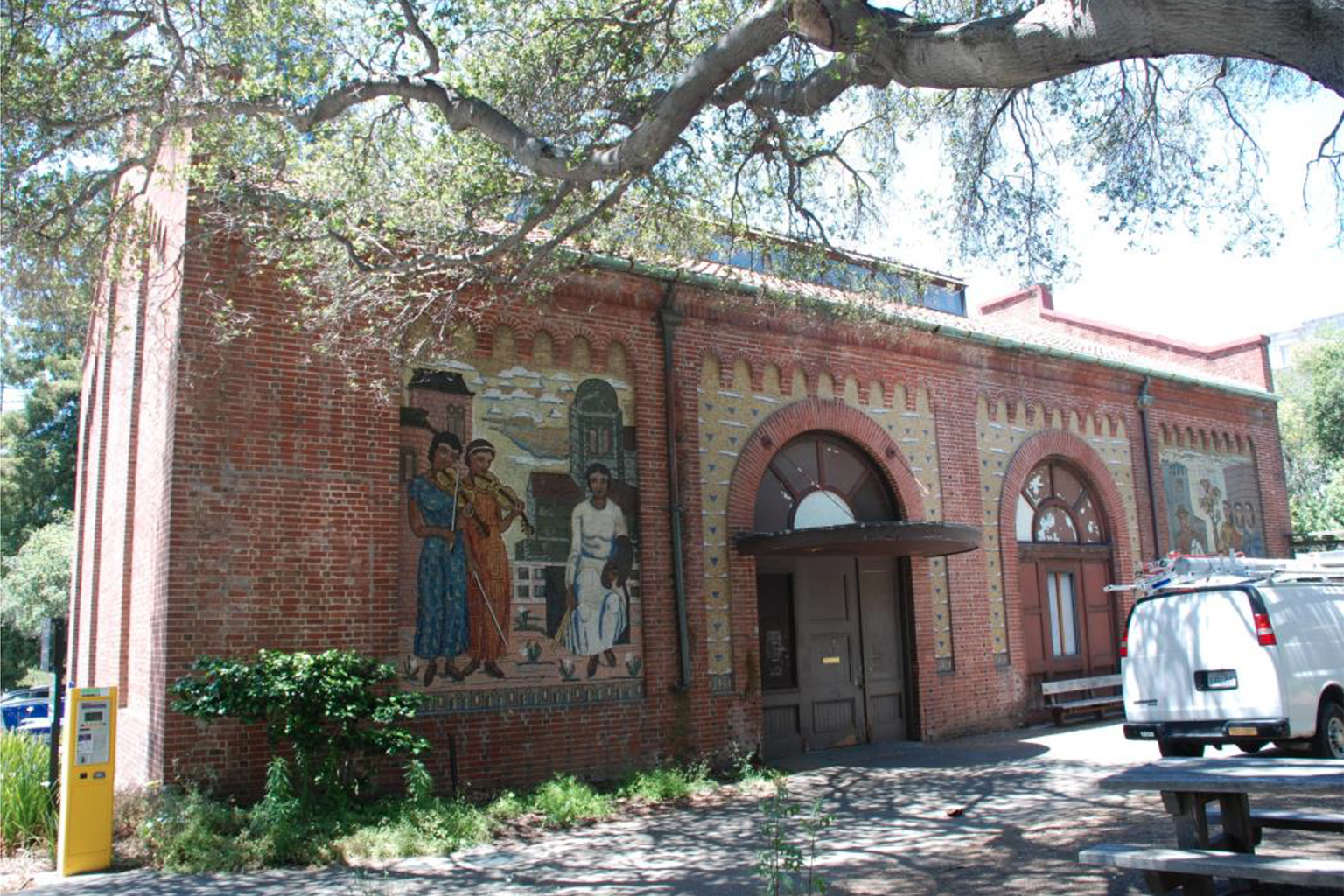Tag Archives: California
- Home
- Posts tagged "California" (Page 5)

Electrical Switch Station #8
Construction progress update: May 24, 2024
This project restores the Old Art Gallery building for a new electrical switching station. The 1904 building was originally the campus powerhouse, supplying electricity and steam to the young Berkeley campus. As the campus grew, power demands exceeded its capacity and, in 1930, a new central plant opened in the southwest part of campus. In 1934, the former powerhouse building reopened as a gallery to display art and served this purpose until a new University Art Museum opened on Bancroft Way in 1970. The building was subsequently used for storage for more than 50 years.
In restoring and structurally improving the Old Art Gallery building to house the new Switch Station #8, the small brick building that began its storied life as a powerhouse more than 100 years ago will become a key component in UC Berkeley’s 100% clean energy future.
IEEE TV: Overview of UC Berkely Resistance Grounded Campus Power System
Pacific Gas & Electric: Electric Service Requirements (TD-7001M) 2022-2023″Greenbook Manual”
Quantum Computing
Is it a fact—or have I dreamed it—that, by means of electricity,
the world of matter has become a great nerve,
vibrating thousands of miles in a breathless point of time?
—Nathaniel Hawthorne, 1851 | The House of Seven Gables
Today we break form from our normal custom of assessing conceptual movement in stabilized safety and sustainability standards for education settlements and, instead, venture into a domain that will inform nearly everything we do; and with gathering pace.
We begin with the action among the experts in the organizations listed below:
- National Institute of Standards and Technology (NIST):
- NIST’s Post-Quantum Cryptography Standardization: NIST is working on standardizing cryptographic algorithms that are secure against quantum attacks. The goal is to ensure that data remains secure even with the advent of quantum computers. This involves selecting algorithms through an open competition, which began in 2016, and is still ongoing.
- Quantum Information Program: NIST conducts research and develops standards related to quantum information science, including quantum computing, quantum communication, and quantum metrology.
- Quantum Economic Development Consortium (QED-C):
- Formed as part of the National Quantum Initiative Act, QED-C aims to enable and grow the quantum industry in the U.S. It involves various stakeholders, including industry, academic institutions, and government agencies, working together to identify and address standards and other needs to foster a robust quantum ecosystem.
- National Quantum Initiative (NQI):
- Established by the National Quantum Initiative Act in 2018, NQI coordinates efforts across multiple agencies, including NIST, the Department of Energy (DOE), and the National Science Foundation (NSF), to advance quantum information science. This includes the development of standards, infrastructure, and research to support quantum technologies.
- International Standards:
- While primarily international, organizations like the International Telecommunication Union (ITU) and the International Organization for Standardization (ISO) have working groups focusing on quantum technologies. U.S. participation in these groups helps ensure that global standards align with U.S. interests and priorities.
- Federal Agencies and Research Programs:
- The DOE, NSF, and other federal agencies fund research and development in quantum computing, which often includes aspects related to standards and best practices. For example, the DOE’s Quantum Information Science (QIS) Research Centers and NSF’s Quantum Leap Challenge Institutes.
- Industry-Led Initiatives:
- Several industry consortia and companies are actively involved in developing quantum computing standards. Organizations like the IEEE have working groups focused on quantum computing and quantum communications standards.
Overall, the U.S. approach to quantum computing standards is multifaceted, involving federal agencies, industry consortia, academic research, and participation in international standard-setting bodies.
Amerikanische Mädchen probieren Döner!!
This content is accessible to paid subscribers. To view it please enter your password below or send mike@standardsmichigan.com a request for subscription details.
Why did the Free City State Disappear?
This content is accessible to paid subscribers. To view it please enter your password below or send mike@standardsmichigan.com a request for subscription details.
On Hearing the First Cuckoo in Spring
This content is accessible to paid subscribers. To view it please enter your password below or send mike@standardsmichigan.com a request for subscription details.
Italian Wedding Soup
This content is accessible to paid subscribers. To view it please enter your password below or send mike@standardsmichigan.com a request for subscription details.
Myron Hunt Architect
Myron Hubbard Hunt (February 27, 1868 – May 26, 1952) was an American architect whose numerous projects include many noted landmarks in Southern California; most notably, the Rose Bowl Stadium, where the University of Michigan Football team appears routinely on New Year’s Day. Hunt was elected a Fellow in the American Institute of Architects in 1908.
Thanksgiving Buenos Aires
The University was founded by George Pepperdine, a successful businessman who found his fortune in the automobile industry (founding Western Auto) and became a philanthropist. He was inspired by his commitment to the values of Christian education and a desire to provide students with a quality education that integrated faith and learning.
The Malibu campus of Pepperdine University is situated on approximately 830 acres on the Pacific Ocean. Student enrollment runs about 8000; undergraduate and graduate.
“Whether we are scientists or engineers, homemakers or business leaders, we must all assume responsibility not only for the kind of jobs we do but also for the kind of people we are.
Education in a Christian environment helps develop and mold tomorrow’s leaders.”
— George Pepperdine (1886-1962)
New update alert! The 2022 update to the Trademark Assignment Dataset is now available online. Find 1.29 million trademark assignments, involving 2.28 million unique trademark properties issued by the USPTO between March 1952 and January 2023: https://t.co/njrDAbSpwB pic.twitter.com/GkAXrHoQ9T
— USPTO (@uspto) July 13, 2023
Standards Michigan Group, LLC
2723 South State Street | Suite 150
Ann Arbor, MI 48104 USA
888-746-3670

















